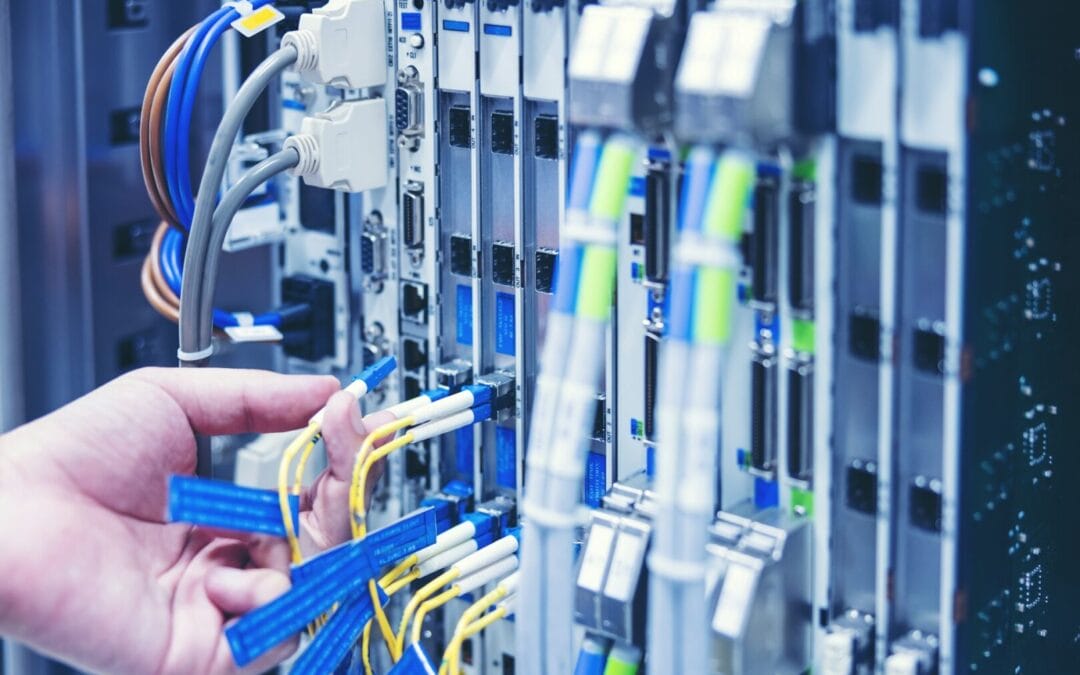When your business relies on smooth communication and data flow, even the smallest disruption can create serious problems. Data cabling is the backbone of almost every modern system that keeps offices running, from internet service to phone lines and payment processing. That’s why keeping those cables working right is more than just a good idea. It’s a must. Any power-related issue that puts pressure on your cable setup can slow things down or stop work completely.
In Boston, the mix of older buildings and unpredictable summer storms makes power issues more common than they should be. Sudden outages, brownouts, or unstable voltage levels can fry connections or leave your team without the tools they need. All it takes is one bad surge to mess with your network. Knowing how to spot early warning signs and take action can help you avoid downtime or expensive repairs later.
Identifying Power-Related Problems in Data Cabling
One of the first signs there might be a power-related issue with your data cabling is a sudden drop in network speed or full disconnection from devices that were working earlier in the day. If your team keeps getting bumped offline, calls are dropping, or file transfers are crawling along, it could point to voltage dips or a surge that affected your systems.
Other signs might be less obvious. You might notice equipment rebooting itself more than usual or switches making strange buzzing sounds. Devices that turn off and on randomly or feel warm to the touch may also be reacting to power inconsistencies. In some cases, damaged cable jackets or slight scorch marks near cable ends can reveal where electrical surges passed through. These should always be checked promptly.
Here’s a look at common red flags to watch for:
– Sudden internet loss across wired devices
– Inconsistent performance during file transfers or backups
– Automatic reboots of routers, switches, or modems
– Burnt odor or discoloration near cable ports
– Damage to cable shielding or noticeable cable bends
For instance, a Boston-based marketing team we worked with kept losing access to their shared drives throughout the day. After ruling out software issues, we traced the problem back to a faulty power strip that surged their network switch. Once replaced and the affected cables were inspected, performance completely stabilized.
Being proactive and recognizing these warning signs early can make the difference between a quick fix and a week of downtime.
Preventative Measures
Keeping your data cabling safe begins with controlling how power flows to your equipment. Letting fluctuating current run wild puts your network at risk, even if nothing fails right away. Power-related damage can be sneaky, slowly wearing down your cables and hardware until one day everything just stops working.
Start by installing proper surge protectors anywhere critical systems are plugged in. Don’t rely on cheap, multi-plug strips from big-box stores. Go for quality ones that are rated for your type of equipment. Make sure anything carrying network traffic, like routers, switches, access points, and even cable modems, is connected to a protected power source.
Take it a step further with these practices:
– Ground your equipment properly to avoid static buildup
– Don’t overload outlets or plug too much gear into one strip
– Space out sensitive electronics to limit cascading failures
– Schedule regular checks for heat buildup, frayed cords, or discolored plastic
– Keep your server and network rooms clean and free from dust to avoid overheating
Regular visual checks also go a long way. If you see worn insulation on your cables, don’t ignore it. Even small signs of wear can lead to bigger problems when power is involved. Be sure to reset your surge protectors after major outages. Some people don’t realize these devices stop working without warning until it’s too late.
By putting these safeguards in place, businesses can avoid sudden surprises and extend the life of their cabling setups. That leads to a more consistent work environment and fewer emergency service calls when the weather gets unstable or the power grid slips up.
Immediate Solutions for Disruptions
When a power-related problem knocks out part of your cabling system, knowing what to do right away can make a difference. A fast response starts with gathering details on what stopped working and isolating systems that might be at risk of further harm. Then, once everything is safe, check your gear step by step and figure out what’s still working.
Here’s a simple approach to follow:
1. Turn off the power to all affected equipment and unplug it
2. Check all visible cables and hardware for burnt smells, melting, or loose connections
3. Look at your surge protectors to see if the reset switch popped or if any lights are off
4. Turn the network back on in order: modem first, then router or switch, then computers and devices
5. Test each device on its own to rule out broken parts before plugging everything back together
Avoid reusing damaged cables or power cords after a disruption. Even if they seem okay, leftover power surges can cause harm little by little until something else breaks. It’s smarter to have a technician take a look. In Boston, fast storms can trigger power spikes without shutting everything down. A local service company recently noticed their switch gear got sluggish after one of these storms. Though nothing had shut down, the ports had degraded from frequent low-voltage surges.
After getting things back online, double-check your surge protection and your UPS if you have one. A single power flicker may not seem serious, but if your backup systems gave out, the next outage could be worse.
Building Long-Term Stability With Smart Solutions
Fixing a one-time disruption is good. Preventing more in the future is better. Boston businesses that keep having signal slowdowns or gear failures often find that their power protection setup is either missing or outdated.
Adding stronger surge protectors is a good fix, but it only works as part of a bigger system. To really secure your network, you have to look at every step of your power supply chain. If your neighborhood or building experiences frequent small surges or power dips, then an Uninterruptible Power Supply, or UPS, is a smart way to even things out. These devices keep your network from fully cutting out and provide smoother voltage control overall.
Here are a few habits that help over time:
– Get in the routine of testing and replacing surge protectors every few years
– Add power checks to your IT maintenance schedule so nothing gets missed
– Learn which breakers connect to which rooms to help avoid overloading circuits
– Let your team know what symptoms to report, such as random reboots or warmer devices
When people on your staff know what to spot, they can catch problems before they grow. While only a technician should repair or replace cables, employees still play a role in noticing issues. If someone’s computer crashes more often than others or their internet cuts out frequently, it may be tied to hidden cable or power issues.
Putting these pieces together builds deeper trust in your workspace. You reduce the panic when something fails and instead handle it calmly and quickly. A more stable network means fewer delays and more time doing actual work.
Keeping Your Business Network Ready
It’s tough to plan for every possible outage, but protecting your data cabling from power issues isn’t out of your control. The best place to start is with clean, protected power and simple visual checks. Add a solid system for responding to surprises, and make sure your team knows what to flag when problems show up.
Boston’s mix of weather shifts and older wiring makes this part of running a business especially important. Taking the time to review your setup, check your surge equipment, and teach staff basic awareness can go a long way. When your cabling is working the way it should, you save hours of lost time and avoid expensive equipment failures.
If things have been unstable or your network feels shaky, don’t guess. Let ASCIO Wireless take a look. Our Boston-based team works with companies across the area to troubleshoot, audit, and maintain reliable data cabling systems. We’ll help you keep your business connected no matter what conditions come your way.
Keep your business connected and running smoothly by addressing power-related risks before they affect your system. The team at ASCIO Wireless is here to help you strengthen your network and avoid future headaches. Learn how our services in data cabling can support your Boston operations today.

